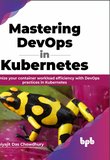-
.NET (.NET Core)
-
1C
-
APL
-
AWK
-
Agda
-
Agile/Scrum
-
Alef
-
Assembler
-
Basic
-
Beta Programming Language
-
Big Data/DataScience
-
C
-
C#
-
C++
-
CSS
-
Cobol
-
Crystal
-
D
-
Dart
-
DataBase (SQL)
-
Delphi
-
F#
-
Flutter
-
Fortran
-
GPT/AI/ИИ
-
GameDev
-
Git
-
Go (Golang)
-
HTML
-
Hacking and Security
-
Haskell
-
Java
-
JavaScript (JS)
-
Julia
-
Kotlin
-
Machine Learning (ML)
-
Natural language processing (NLP)
-
PHP
-
Pascal
-
Python
-
R
-
Ruby
-
Rust
-
Scratch
-
Swift
-
UML
-
UX/UI
-
Visual Basic
-
Wolfram
-
XML
-
АСУ
-
Проектирование/System Design
-
Сети/Network
-
Схемотехника/электронные схемы
-
.NET (.NET Core)
-
1C
-
APL
-
AWK
-
Agda
-
Agile/Scrum
-
Alef
-
Assembler
-
Basic
-
Beta Programming Language
-
Big Data/DataScience
-
C
-
C#
-
C++
-
CSS
-
Cobol
-
Crystal
-
D
-
Dart
-
DataBase (SQL)
-
Delphi
-
F#
-
Flutter
-
Fortran
-
GPT/AI/ИИ
-
GameDev
-
Git
-
Go (Golang)
-
HTML
-
Hacking and Security
-
Haskell
-
Java
-
JavaScript (JS)
-
Julia
-
Kotlin
-
Machine Learning (ML)
-
Natural language processing (NLP)
-
PHP
-
Pascal
-
Python
-
R
-
Ruby
-
Rust
-
Scratch
-
Swift
-
UML
-
UX/UI
-
Visual Basic
-
Wolfram
-
XML
-
АСУ
-
Проектирование/System Design
-
Сети/Network
-
Схемотехника/электронные схемы
Меню
Kafka in Action

Автор: Gamov Viktor, Klein Dave, Scott Dylan
Дата выхода: 2022
Издательство: Manning Publications Co.
Количество страниц: 272
Размер файла: 15,1 МБ
Тип файла: PDF
Добавил: codelibs
PART 1 GETTING STARTED
1 Introduction to Kafka
2 Getting to know Kafka
PART 2 APPLYING KAFK
3 Designing a Kafka project
4 Producers: Sourcing data
5 Consumers: Unlocking data
6 Brokers
7 Topics and partitions
8 Kafka storage
9 Management: Tools and logging
PART 3 GOING FURTHER
10 Protecting Kafka
11 Schema registry
12 Stream processing with Kafka Streams and ksqlDB
Kafka in Action is a fast-paced introduction to every aspect of working with Apache Kafka. Starting with an overview of Kafka's core concepts, you'll immediately learn how to set up and execute basic data movement tasks and how to produce and consume streams of events. Advancing quickly, you’ll soon be ready to use Kafka in your day-to-day workflow, and start digging into even more advanced Kafka topics.
About the technology
Think of Apache Kafka as a high performance software bus that facilitates event streaming, logging, analytics, and other data pipeline tasks. With Kafka, you can easily build features like operational data monitoring and large-scale event processing into both large and small-scale applications.
About the book
Kafka in Action introduces the core features of Kafka, along with relevant examples of how to use it in real applications. In it, you’ll explore the most common use cases such as logging and managing streaming data. When you’re done, you’ll be ready to handle both basic developer- and admin-based tasks in a Kafka-focused team.
What's inside
- Kafka as an event streaming platform
- Kafka producers and consumers from Java applications
- Kafka as part of a large data project
About the reader
For intermediate Java developers or data engineers. No prior knowledge of Kafka required.









